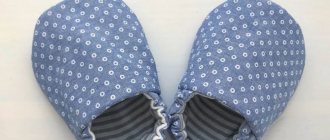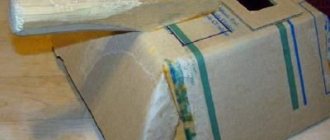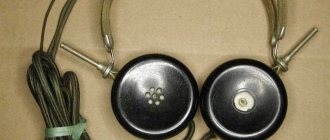Each of us has encountered a situation when the insoles inside the shoes “treacherously” got wet. In addition to the fact that this is an unpleasant sensation, it can provoke various diseases, including joints. Because the most common insoles made of padding polyester or faux fur are capable of accumulating moisture.
In addition, they dry out rather poorly, and this event takes a lot of time.
In this article we will look at what types of heated insoles there are and how to make them so that your feet are always warm and dry.
Handmade improvisation
It’s quite possible to make miracle shoe inserts with your own hands. To do this, you need to “carry out” electric heating. The simple design can retain heat for a long time. Drying occurs in minutes.
In addition, the constant temperature prevents the insoles from getting wet, even if there are small cracks in the shoes.
How to make at home
Making your own orthopedic structure is not difficult. But the effectiveness of the device is questionable. Diagnoses and the degree of violation of the relationship of the bone structures of the extremities are different. Even in one patient.
Incorrectly selected materials and unprofessional design can cause discomfort, pain when using orthoses, contribute to the appearance of corns, and aggravate the course of the pathology.
How to select and prepare material
The use of an orthopedic design implies prolonged contact of the foot with the insole. The material of the orthosis must meet the requirements:
- naturalness;
- hygiene;
- must allow air to pass through;
- ease of care and hygienic treatment.
Natural leather and cotton fabric have the necessary qualities. Experienced experts recommend using used leather products and thick denim. Finished devices can be made of cork or plastic.
You will need a small roll of cotton wool, a 3.5 cm wide bandage, and a medical adhesive plaster. Leather products must be hard, dense, free from abrasions, roughness, and bends.
How to measure your foot correctly
If suitable used insoles cannot be used to make orthoses, then a blank will have to be cut from the prepared material. You should first measure your feet.
Measurement technique:
- Place your foot on a blank sheet of paper. Shift your body weight completely to this leg.
- Outline the contours of the foot with a pencil. It is better if an assistant does this. If you plan to wear shoes with socks, measurements are taken with them on.
- Measure the length at the extreme points - at the heel and big toe. This will be the length of the foot. If the second finger is longer than the thumb, measurements are taken from the second finger.
Step-by-step instruction
You can make orthopedic insoles with your own hands step by step:
- Take a ready-made insole that is suitable in size for a specific pair of shoes.
- Place your bare foot on the object and transfer your body weight to it.
- Using a pencil, make a mark between the first and second finger.
- Roll a ball out of cotton wool. The diameter of the finished product should be 10-15 mm.
- Attach the ball to the insole using adhesive tape.
- To make an instep support, you will need a roll of bandage 3.5 cm wide. It is placed under the arch of the foot, forming a kind of step to reduce the load on the limb. The location, thickness, shape is selected individually. The main thing is ease of use.
- Secure the bandage with adhesive tape.
- Cut the top from leather or thick cotton fabric. Sew onto the prepared structure.
- For the second leg, we repeat the manipulations step by step.
How does heating work?
If you consider the option of using copper wire with a varnished coating, you will see that the design is very functional. First you need to calculate the length, make a heating platform, which is placed under the main insoles. It is important to remember that there must be an insulating layer (it can be made from hot glue).
Read here - Which chandelier is better to choose: designer tips for use in the living room interior and a master class on making a chandelier (125 photos and videos)Secure the on/off button to the tongue, in the lacing area. Anyone can make electric insoles with charging if they really want to.
But the master himself assembled the convector on insoles
The heating thread was laid across the insole so that when walking with bends in the sole, the wires would not move. The entire length of the nichrome is sewn to the base.
There is room for a second layer of heating element. It will be mounted on a leather base, and it transfers heat well to the feet. In this case, little energy is lost, and the skin does not warp from the heating of the elements. The leather insole is sewn to the bottom - the seams will pass between the nichrome threads.
Two nichrome contacts are removed from the insole, two stranded copper wires up to one and a half meters long each (plus and minus the battery) are soldered to them.
Note!
FIFA 22 (PS4)- Why do you need interior dolls?
- How to choose shoes that don't go out of fashion?
What is needed to create insoles
Prepare everything you need:
- copper wire;
- insole pattern;
- cardboard;
- detachable power socket;
- tool for processing copper thread;
- on/off button;
- batteries;
- diode;
- insulation;
- tinning device;
- glue gun;
- scissors and nippers.
Factory heaters
ThermaCell company offers insoles weighing 0.5 kg each for almost 16 thousand rubles. A strange price, because the same devices will be delivered through an online store much cheaper. It is not clear why the price is being increased. The insoles - for size 46 - only heat up for up to five hours. Then recharge the battery.
The WarmSpa kit has a budget price – through Yandex Market – 3750, on AliExpress – 1450 rubles. But with two batteries, for 3-6 hours of operation. There is a color heating indicator, convenient for adjusting the temperature. The downside is the thick insole - up to half a centimeter.
There are insoles on sale with replaceable batteries made in Russia - they cost about 1,200 rubles. Warms up your fingers well. Batteries can be changed without removing the insoles. Severe frost reduces the voltage and current of the batteries.
Note!
Blazewear insoles are heated by a pair of AA lithium batteries. The compartment with them is attached to the leg with Velcro.
Self-heating insoles from Heat Generator. Chemical heating - up to six hours. The elements are bio-ecological. The insoles are light and comfortable to wear in shoes. The cost is simply ridiculous - less than 300 rubles.
Let's try to do
First you need to cut out the multi-layer insoles. The part below will be warming (made of thin cardboard, which must withstand friction from movement).
Using the stencil we draw a platform (it should be slightly smaller than the main insole). Use a hole punch to make holes along the edges around the entire perimeter.
They are necessary to secure the heating element so that it does not “crawl” when walking. The best charging heated insoles can be made by yourself.
Check it out here too!
Crochet a crop top: patterns and ideas- How to make a homemade metal detector - the best diagrams, instructions. Review of proven options for creating a simple do-it-yourself metal detector
How to choose a washing machine: advice from professionals, the main subtleties of choosing a reliable and high-quality machine. Types, types, programs and functions
Add a link to a discussion of the article on the forum
RadioKot >Schemes >Digital devices >Household appliances >
| Article tags: | Add a tag |
Heated insoles and remote control
Author: SSMix Published 09/21/2020 Created using KotoEd. Participant of the Competition “Congratulate the Cat as a Human 2022!”
The article describes a method for manufacturing (or upgrading purchased) heated insoles and adding them with radio control from a remote control.
The Aliexpress website has a large selection of heated shoe insoles, powered by both USB and batteries. The last option is more mobile, because allows you to keep your feet warm outside during the cold season. The batteries are placed in the pocket of bags that are attached to the ankles. The insoles are connected to the batteries using connectors. The cost of such insoles starts from a few dollars. These insoles were purchased at a sale in November 2022 for $13.57.
They were designed for a voltage of 3.7V; the kit included 2000mAh batteries and a power supply for charging them at 5V 1200mA. In fact, despite the significant price of $16.57 (before the sale), the item turned out to be ordinary Chinese bullshit. No, the insoles, of course, warmed up, though not very much and only in the middle part. In winter, when the temperature outside was zero, I stood in them at the bus station for 40 minutes waiting for the bus. The feeling is twofold. On the one hand, you seem to feel warm in your boots, but your fingers are cold, and you had to move somehow to avoid freezing. Having entered a crowded bus while standing, it is no longer possible to turn off the insoles; the battery charge is wasted, so upon arrival at the destination we have discharged batteries. They do not provide any protection against discharge. In any case, the controller board cannot be felt under the black shell. The tested battery capacity was 1720 and 1750 mAh. With a current consumption of about 0.6A, they should be enough for 2.8 hours. The insoles are glued together from two layers, between which there is white fabric stitched with high-resistance wire. The dimensions of such a “heater” are approximately 170x30mm. Here is a photo of these insoles from the Aliexpress website of one of the buyers in the reviews, taken with a thermal imager:
It can be seen that the promised 50°C is not there, and this is at +19°C. In mild frost of a few degrees, the heating from such insoles is practically not felt. The first modification of these insoles was the installation of buttons for operational heating control. So, since it is impossible to determine what state they are in by the position of the buttons, we had to rely on thermal sensations. At -2°C it was impossible to understand whether they were heating or not by clicking a button. The thrifty (or stingy?) Chinese have done something strange (scary?) with charging, which is not at all surprising to them. Knowing their tendency to be stingy, when many devices use a series-connected diode with a resistor as a charge controller for lithium batteries, and all this is connected to a 5-volt charging unit, resulting in a swollen battery after the first charge, this power supply was opened . A diagram was drawn from the printed circuit board:
As you can see, there is no trace of a charging controller - there is only a two-color LED indication of the load current, for which the Chinese did not spare an additional LM358 dual op-amp chip! Its two op-amps are used as comparators, comparing the reference voltage of about 25 mV from the resistive divider with the voltage drop across R9. The threshold for switching from red to green LED is 0.025 V / 0.2 Ω = 0.125A. There was still a glimmer of hope that the charging controller was hidden in the plug, but no, it called directly. There is nothing in the batteries themselves to the touch. When charging the batteries, they are connected in parallel to the 5V charger!!! When the battery is connected, the voltage at the charger output drops to 4.7V. Thanks to the very thin wiring on the batteries, the voltage becomes slightly less, but the final voltage will tend to 5V, instead of 4.2V. Maybe the Chinese invented some new charging cut-off circuit and built it into the battery itself? Hardly. Therefore, a charging module on the TP4056 was sealed into the charging cable gap.
The current in each module was set by resistor R3 at 0.5 A (resistance increased from 1.2 kOhm to 2.4 kOhm), because charging does not produce more than 1 A, and even then the output voltage drops from 5.3 to 4.1 V. The next modification affected the insoles themselves. The idea arose to add another heating element to the toe area in each insole. First, a scarf was made from thin fiberglass, onto which SMD resistors of size 0603 were sealed. Additional heaters were connected in parallel with the standard ones, but the idea was a fiasco. No, the heating increased, and the fingers were warm for some time, but since the board was bending during movement, the ceramic base of the SMD resistors could not stand it, it cracked and the resistor chains broke off one after another. Then, on the same Aliexpress, separate heating elements “made of carbon fiber” were ordered (from the same carbon fiber, according to the description, the insoles themselves should have been purchased earlier, but the Chinese can promise and write anything, for example, that the insoles have an “intelligent thermostat” ):
This product was made in a very primitive barn-handicraft way. On one side of the conductive material, two copper strips of foil are placed at the edges and the whole thing is laminated, having previously punched holes in the film for soldering the wires opposite the copper strips. The ohmic resistance of such a heater is not constant, it is about 7...8 Ohms and very much depends on the degree of pressure on the foil. Obviously, with such a manufacturing “technology”, contact with the conductive fiber leaves much to be desired. If in the initial state the current consumption of the heating plate from 4V was about 0.5 A, then when it was placed in the insole under the influence of a person’s weight, the pressure of the copper strip to the fiber became stronger and the current consumption increased to 1A! While moving, the current consumption varied within significant limits. One of the heaters was disassembled for modification to improve contact, but the conductive fiber delaminated and partially remained on both halves of the film. Therefore, the carbon fiber heating elements were left alone and it was decided to make an additional sock heater from high-resistance wire. But where is the easiest way to get it, and even one that can be easily soldered? From a wirewound resistor! For this, a 5-watt green wirewound resistor KNP (Royal) with a nominal value of 10 Ohms was used:
Having carefully scraped off the green sealant from one end, the end of the wire was found, by pulling on which the latter is easily wound up, after which it is cleaned of adhered particles of sealant. As a result, we have a piece of the desired high-resistance wire with a resistance of 10 Ohms, which is easily tinned and soldered. At a voltage of 4V, the power dissipation will be 4*4/10=1.6W. Next, this wire is laid on a sticky layer of tape in the shape of the toe of the insole, sealed on top with a second piece of tape, leaving solder pins on the outside, and as a result we have the following heater:
It is soldered parallel to the main one in the insole. We do the same with the second insole. As a result, we have reinforced insoles with a resistance of about 3.5 Ohms, and consuming a current of about 1-1.2 A from the battery. When making your own insoles, you buy the usual 2 pairs, make a heater using the technology described above for the entire area of the insoles, and place it between the insoles, or you can glue them. Now, regarding ease of use. On Aliexpress, there are insoles for sale with a radio remote control and even those with temperature control, their cost starts from $20:
There is a built-in battery inside, as a result, the thickness of the insole in the heel area is at least 12 mm, which is quite inconvenient and you cannot insert such an insole into every shoe. Moreover, putting all your weight on a delicate and flammable lithium battery is not psychologically comfortable. But the idea with the remote control is smart. The remote control can easily control the heating of the insoles even in crowded transport, as long as you can put your hand in your pocket with the remote control. On the same Aliexpress there are ready-made remote controls with receivers operating at frequencies of 315 and 433 MHz. Remote controls are usually assembled based on the PT2262 microcircuit, and the receiving part is based on PT2272:
There are also more advanced learning receiving modules that work with remote controls based on different microcircuits:
Their advantages include the receiving part, made on a quartz microcircuit without the use of inductors, which ensures good thermal stability and no need for adjustment. In order to miniaturize the design, the smallest four-channel trainable receiver module TYJM01A-K at a frequency of 433 MHz was selected, having overall dimensions of 18.8 × 14.8 × 5 mm:
The module has the following parameters (listed on the seller's website): - Operating voltage: 2 ~ 5.5 V - Operating current: 2.8mA (315 MHz) 3.5mA (433 MHz) - Modulation method: ASK/00 K - Receiver sensitivity:- 108 dBm - Data transfer rate: up to 10 kPB - I/O port drive capability: <= 20 mA - Operating temperature range: -40 ~ 85 degrees Celsius - Fixed code chips supported: EV1527, PT2262, HX2262, SC2260, SC5211 , HS2240, etc. - four operating modes: L4, T4, M4 and H4 - 4 outputs, LED learning indicator. The remote control was also chosen to be four-channel, teachable, small-sized with dimensions of 55 mm x 28 mm x 14 mm:
It was decided to use the 4 control buttons of the remote control as follows: A - heating at 1/3 power; B - heating at 2/3 power; D - heating at full power; C—off. To interface the receiver module with the insoles, a control board was developed on the ATtiny13A microcontroller (DD1) and a field-effect transistor switch IRLML6244 (VT2), which switches the power supply from the battery to the insoles:
Because The control board was supposed to be located on the ankle (in the sock), a vibration response to the execution of commands from the remote control was implemented: A - 1 short signal (heating at 1/3 power); B — 2 short signals (heating at 2/3 power); D — 3 short signals (heating at full power); C - 1 long beep (off). This way, unnoticed by others, you can understand which mode the device switches to. The vibration motor was used from a faulty mobile phone. Current consumption is about 100 mA. Control via VT1 IRLML6244. The microcontroller is also tasked with monitoring the battery voltage (divider R8, R9) and turning off the heating when it drops to 3 V. In this case, 1 long vibration signal is sent. The voltage from the battery is supplied to the power part of the circuit through a self-restoring fuse FU1 3A, 6V, since there was no hope that any protection was built into the battery. It was decided not to touch the PB5 (RESET) port of the microcontroller, because When activating the RSTDISBL fuse, the ability to quickly upload firmware via connector X1 would be lost. The button for training the receiver module is also connected through the same connector via the decoupling diode VD4. In operating mode and when programming the microcontroller, this diode is closed and does not affect the operation of the circuit. The remaining 2 free ports PB0 and PB1 are used to supply control signals from the TYJM01A-K receiving module. To do this, 4 control signals are encoded into 2 using resistors R5...R7 and a diode assembly VD1. Outputs D1 and D3 are connected to ports PB0 and PB1, respectively, through limiting resistors R5 and R7. The operating mode of the TYJM01A-K module is set to L4 (4 dependent channels with fixation), i.e. if one output is turned on, all others are turned off. Therefore, only one signal is always present at the module outputs (before the first command is given after turning on the power, all outputs are in the zero state). Signals D1 and D3 are fed directly to ports PB0 and PB1. The D2 signal supplies logic 1 to both ports at once through the VD1 diodes. Resistors R5 and R7 have a higher resistance compared to R6 and, despite the logical zeros on D1 and D3, high-level logical signals are present on PB0 and PB1. The D0 command is not used in the circuit, because when a signal appears on D0, a log appears on D1, D2 and D3. zeros, and logs also appear on ports PB0 and PB1. zeros. Below the diagram is a table of logical signals that explains the coding principle. LEDs HL1...HL4 of different colors help to visually assess the operating mode of the device, and also provide tangible assistance in the process of programming the TYJM01A-K receiving module. The programming process itself was kindly provided by the Chinese seller. Programming is carried out in two stages. The programming button must be connected between the VT and GND pins of the module. First, you need to write the fixed code of the radio control into the module. To do this, you need to briefly press the learning button, and within 6 seconds, press and hold any button on the remote control for at least 3 seconds until the learning LED on the module flashes 2 times. After 6 seconds, the learning mode is automatically exited. You can check the operation of the receiver module immediately by pressing 4 buttons on the remote control in turn. By default, the receiver module is enabled in M4 mode, i.e. Log.1 appears at the output of the corresponding channel only while the button on the remote control is pressed. To switch the receiver module to the required L4 mode (with fixation), you must press and hold the learning button for at least 0.5 seconds. After releasing the button, the indicator will blink 2 times. Now, within 6 seconds, you must enter the operating mode code by pressing the learning button the appropriate number of times. For L4 mode this is 4 times. Afterwards, you must press and hold the learning button again for at least 0.5 seconds. After releasing the button, the indicator will blink 2 times and the receiver module will go into L4 operating mode. To program the TYJM01A-K receiver module, it is not necessary to solder it into the circuit; you can solder the button and LEDs on the pin connector so as not to solder the module pads. In case of problems, you can open a dispute and get your money back. For installation of the insole control circuit, a single-sided printed circuit board was developed:
The dimensions of the board were 25x32 mm. The TYJM01A-K receiver module is soldered onto the board with pieces of wire. A piece of insulated wire is used as an antenna. The length does not play a decisive role, because... the distance from pocket to shoe is about 1 meter, and the sensitivity of the receiver is quite high.
List of elements for assembling 1 board:
C1 = 0.1 (0805) C2 = 10.0x10V (Tantalum body A) C3 = 1000pF (0805) C4 = 10.0x10V (Tantalum body A)
DD1 = ATtiny13A-SSUTR (SOIC-8)
FU1 = 3A, 6V (1206)
HL1 = Green (0603) HL2 = Yellow (0603) HL3 = Red (0603) HL4 = Orange (0603) HL5 = Red (0603)
M1 = Vibration motor
R1 = 47k (0603) R2 = 22k (0603) R3 = 47k (0603) R4 = 22k (0603) R5 = 47k (0603) R6 = 1k (0603) R7 = 47k (0603) R8 = 3M (0805) R9 = 1M (0805) R10 = 47k (0603) R11 = 560 (0603) R12 = 560 (0603) R13 = 22 (0805) R14 = 100 (MF-12) R15 = 560 (0805) R16 = 560 (0603) R17 = 22 (0603) R18 = 100k (1206) R19 = 47k (1206)
VD1 = BAW56 (SOT-23-3) VD2 = 1N4148 (0805) VD3 = BAT54C (SOT-23-3) VD4 = MBR0540 (SOD-123)
VT1 = IRLML6244 (SOT-23) VT2 = IRLML6244 (SOT-23)
X1 = NX 1.25-6 (1.25mm pitch) X2 = (DC plug 3.5×1.4)
Jumpers 1206 - 3 pcs.
The vibration motor is attached to the board using hot glue. After installation and testing of the circuit, the board is placed in a transparent (for visual inspection of LEDs) heat-shrinkable tube of a suitable diameter and heated to shrink it.
The program for the microcontroller was written in C language in the WinAVR-20100110 development environment. The microcontroller operates at a clock frequency of 128 kHz from an internal generator. MK fuses : CKDIV8=1 (internal frequency divider by 8 is turned off), CKSEL[1:0] = 11 (Internal 128 kHz Oscillator) SUT[1:0] = 10 (Slowly rising power) BODLEVEL[10]=10 (Ureset <1.8V) (“0” checkboxes are set) The heating power is adjusted by PWM modulation with a period of 3 seconds, i.e. in mode A: 1 sec heating, 2 seconds pause, in mode B: 2 sec heating, 1 second pause, in mode D heating is constant. The HL5 LED allows you to visually observe the operating mode of the heater. Tests of the device have shown the reliability of its operation and ease of use. Compared to the original Chinese version, it’s like switching from a Zaporozhets to a Mercedes. Heating appeared in the finger area. Using the remote control, you can set the desired operating mode at any time, even in crowded transport. To secure the batteries, the standard Chinese fabric fastener with an ankle pocket was not used due to its tight elastic band. Instead, a piece of single-core wire bent into a hook was attached to the battery with tape, and the battery itself was hung on the outer edge of the boot (it is still not visible under the trouser leg). The control board was placed under the top edge of the sock for tactile contact with the vibration motor.
In mode 2, the operating time from a single charge of a 2000 mAh battery was 1 hour 50 minutes. When fully heated - about 1 hour 10 minutes.
Files:
KNP (Royal) Board Source
All questions in the Forum.
| What do you think of this article? | Did this device work for you? | |
| 15 | 3 | 5 |
Let's move on to the winding
Depending on the saturation of the wire winding, the surface will heat up. Everyone can adjust the amount of heating of a certain zone based on their needs. The calculation is made individually.
For example, you can do this: more heat goes to the toe, medium heat in the heel area, low heat in the middle of the foot. By choosing this variation, you will need 10 m of wire.
Next, mark the layers for protection on the paper according to the pattern, draw and cut out. After this, you need to cover the heating base with paper insoles on both sides. Do this using hot glue.
There are many ideas on how to make heated insoles, but we will look at this one. Practice has shown, or rather even proven, the effectiveness of this method.
What is the base of almost all shoe insoles made of?
The basis for the manufacture of most insoles is a modern material - foamed rubber latex, the structure of which consists of interconnected cells of latex foam and creates a network of channels that pump air with every movement of the foot. As a result of research, it was revealed that latex foam has bacteriostatic and bactericidal properties. What is rubber latex? Latex is the milky sap of the hevia tree. "Kao-uchu" for the Indians was a tree that cries. For us today it is Hevea Brasiliensis, a tall-trunked plant originating in Brazil but grown primarily in Malaysia, New Guinea. The peculiarity of this plant is that when cut, it releases juice, which quickly hardens, but at the same time retains its elastic properties. After receiving the raw materials, in compliance with all environmental requirements, the processing stage begins, during which other natural substances are added to obtain a compact mass rich in millions of air bubbles. The foam thus obtained is then sent to final processing. This process, called vulcanization, causes millions of interconnecting microcells to form within the latex foam. They provide the necessary balance of elasticity, temperature and air circulation in the finished product, latex foam. Thanks to these characteristics, latex foam insoles provide the comfort and hygiene necessary for a physically healthy life. Now you know all the properties of latex. It is latex that gives the insoles a freshness and hygiene that you will never find in other synthetic materials.
Let's continue tinkering
When gluing, it is important not to forget about bringing the contact ends out. After which they are connected to the insulated ends of the wires.
Check it out here too!
- Homemade lanterns with your own hands: step-by-step instructions on how to make a beautiful and effective lantern (110 photos)
Grout - use, reviews, leading manufacturers
- Replacing a pressure tap - a step-by-step description of how to change a pressure tap with your own hands (80 photos + video)
Next, we solder the connections and seal everything using heat-resistant plastic tubes. The circuit is complemented by batteries equipped with a power socket with a button.
Now we connect the batteries, having previously connected them in parallel with the soldered contacts. Glue the battery body with electrical tape.
The instructions on how to make insoles with your own hands are quite detailed. But, if something is not clear, you can always find a video or look at pictures.We continue to make warm insoles. Now you need to solder the switch button with the diode and the power socket. They are then located on the battery body. We carefully isolate everything.
Heating source options
In fact, there are only two such sources:
- electric batteries
- chemical reaction of two reagents.
Each of these methods has its own advantages and disadvantages. The advantages of chemical sources include their autonomy and the absence of all kinds of wires.
Disadvantages include:
- disposability
- short period of work
- inability to adjust temperature
- low temperature generated by the insole.
Final stage
There comes a time when the heating platform can be inserted into the shoes. A regular insole is placed on top of it. Where should I put the battery housing? It's simple. It can be “hidden” between the lacing and tongue if we are talking about sneakers or boots.
In fact, you can make heating for shoes in different ways. But, if you are not one of the people who like to create everything and anything with their own hands, then do not despair.
Check it out here too!
- What is an acoustic switch: device, operation, types and features of the device (100 photos)
- Low and high pass filter: making frequency filters and how to create high-end circuitry (95 photos + video)
Do-it-yourself electric bike: how to build an inexpensive and powerful electric bike from scratch (100 photos)
Today it is easy to become the owner of insoles with insulation. Go to the store and buy.
Threads and tools
In order to sew durable slippers, you need to use special, especially strong threads. For sewing slippers, cotton threads in 6,9,12 folds No. 30, 40, 50 are suitable. Cotton lavsan threads No. 44 LH-1, 65 LH-1 or lavsan threads No. 22 L, 33 L, 55 L, 90 L. For stitching parts For the top of the slippers, nylon threads No. 65 K, 95 K are best suited. To attach the sole, stronger nylon threads No. 470 K, 565 K are needed.
The details of the top and the edging of the sections can be done on a sewing machine, but you will have to stitch the top and edging to the sole by hand. Therefore, purchase a special awl from a hardware store. With its help you can sew strong and durable slippers from any materials.
Photo of DIY heated insoles
Care and operation
There is one rule that applies to all three types of insoles - you must not break the protective casing. Although most insoles can tolerate a certain amount of moisture, it is best not to test them for water tolerance - although products with a remote battery have a better chance in this regard.
When you get home, it’s better to take out the insoles. If they were wet, let them dry and charge them. Do not allow kinks or tension on the wire - this can shorten its service life.
How to choose the size of insoles
The most reliable way to size heated insoles is to measure the factory insole from your boot and select a heated insole that is the same length. For example, if the insole from a winter boot has a length of 262 millimeters, then you should choose “Sibiryak” insoles of size 40-41 (26 centimeters). If the size of the insoles is chosen correctly, the insole will fit securely in the shoe.
“If it is impossible to remove the insole from the shoe, keep in mind that the insoles should be slightly larger than the size of the foot. So, for example, if the length of your foot from the tip of the big toe to the extreme point of the heel is 272 millimeters, then the optimal insole size for you will be size 44-45 (28 centimeters),” Minin advised.
In total, the buyer can choose from eight sizes of insoles from 32 to 47, or order products of any other size.
Insoles manufacturing process
One of the many positive reviews about our heated insoles:
Katrich, user of otzovik.com: “Now my problem of freezing feet in cold weather is solved. When I go outside, I turn on the insoles and after 2 minutes I can already feel how warm they are. The heating temperature is 40 - 45 degrees. Constant work is not required, since the heat is retained for quite a long time, so I turn them on/off several times during a walk. I am very pleased with the thermal insoles, now walks in frosty weather have become pleasant, because when your feet are warm, you yourself do not freeze.
Feet are very sensitive to low temperatures. Even the warmest and highest quality shoes are sometimes unable to completely protect your feet from the cold. Hypothermia in the feet results in illnesses and, most importantly, decreased immunity.
Therefore, it is very important to keep your feet warm. In winter, heated insoles will do the job perfectly.
They can be purchased in stores or made yourself.
What are they intended for?
Self-heating insoles are needed to protect feet from cold in extreme conditions. They are often used by fishermen, snowboarders, and people who have to work outdoors for long periods of time in cold air. They prevent a person from becoming hypothermic. Additional space is created between the foot and the sole, so the risk of getting sick is significantly reduced.
For outdoor recreation or fishing trips, it is advisable to use heated disposable insoles, for example, saline insoles. They don't need to be charged or plugged in
But it is important to consider that salt products are often damaged due to the destructive effects of the substance
When skiing, it is better to heat your feet using battery-powered products. They do not interfere with movements and provide the required level of warmth for a long time. In addition, the models do not require air access, unlike products such as disposable heated insoles.
Design differences between products
Warming insoles differ in their design. The following varieties can be distinguished:
- Wireless. This option involves placing the heating element in the heel area. The duration of operation of the insoles depends on this localization. Some manufacturers equip products with a remote control to control the heating temperature and operating time. There are no power supplies on the outside. You need to select shoes carefully, as there will be a significant thickening in the heel area. The battery life usually does not exceed 3 years.
- Wired. These heated shoe insoles operate evenly. Wires are required to connect the power supply. The thickness of shoe inserts does not exceed standard values. Since the batteries are changed, the device can last for many years. The heating element is placed under the toes, so these warm insoles can be adjusted to fit. Due to their greater functionality, the models are expensive.
WirelessWired











